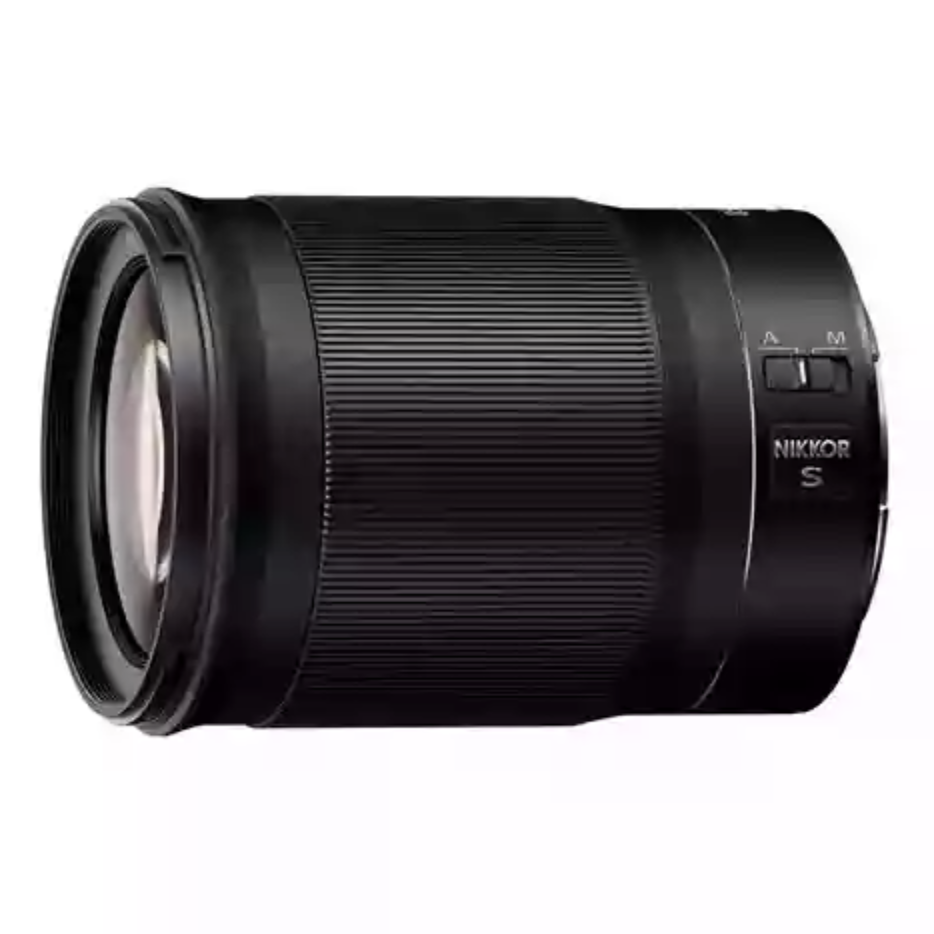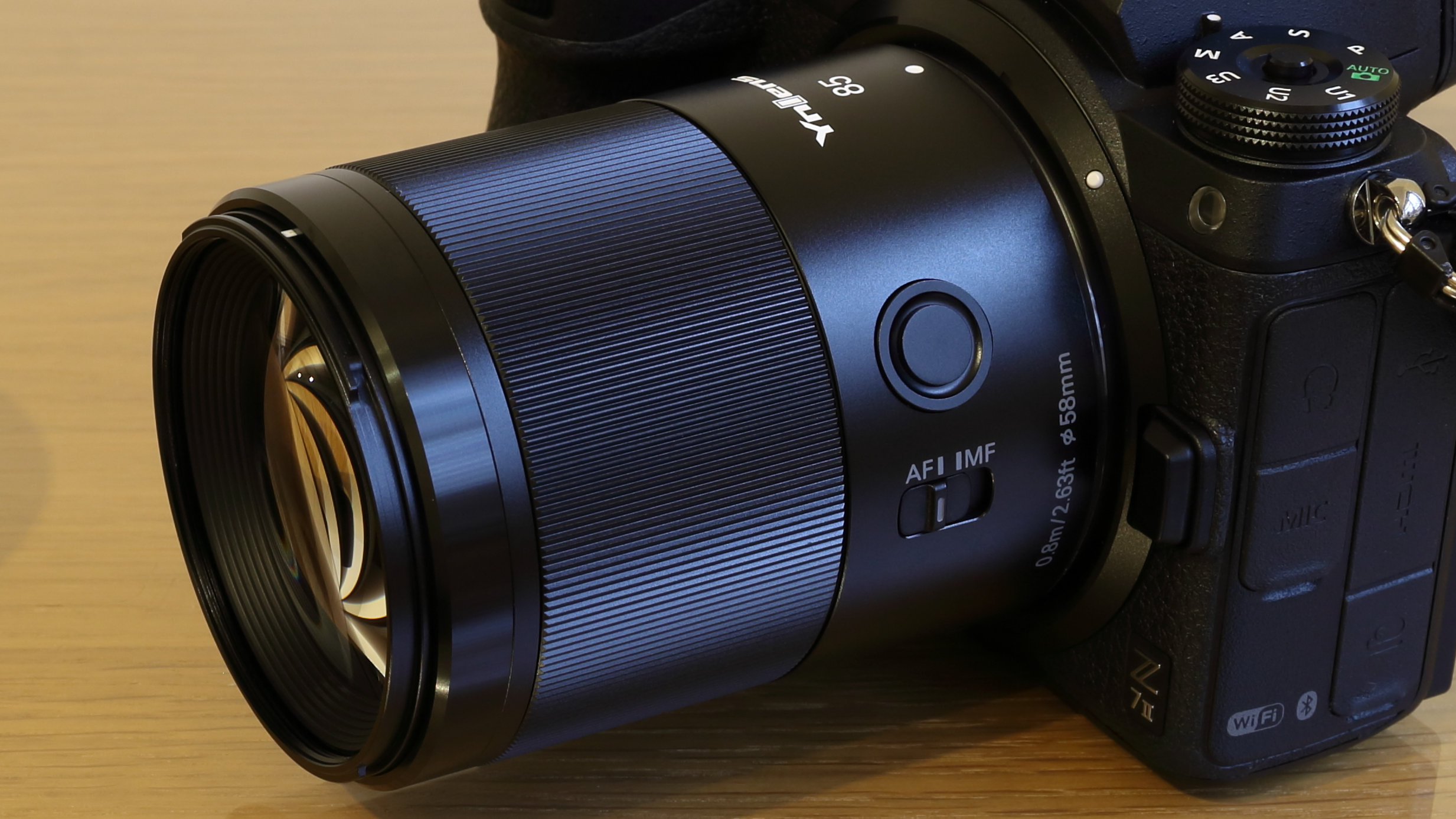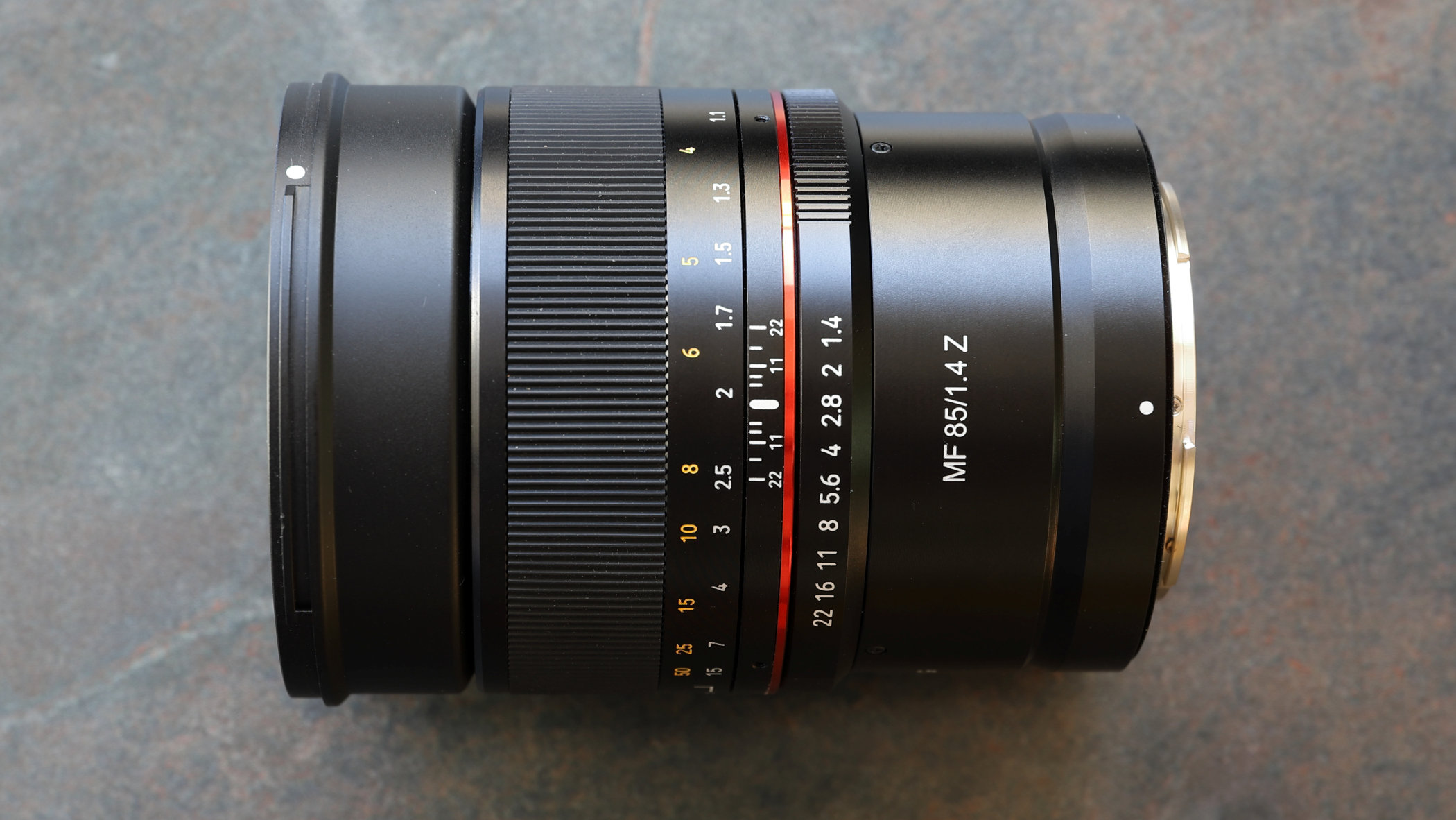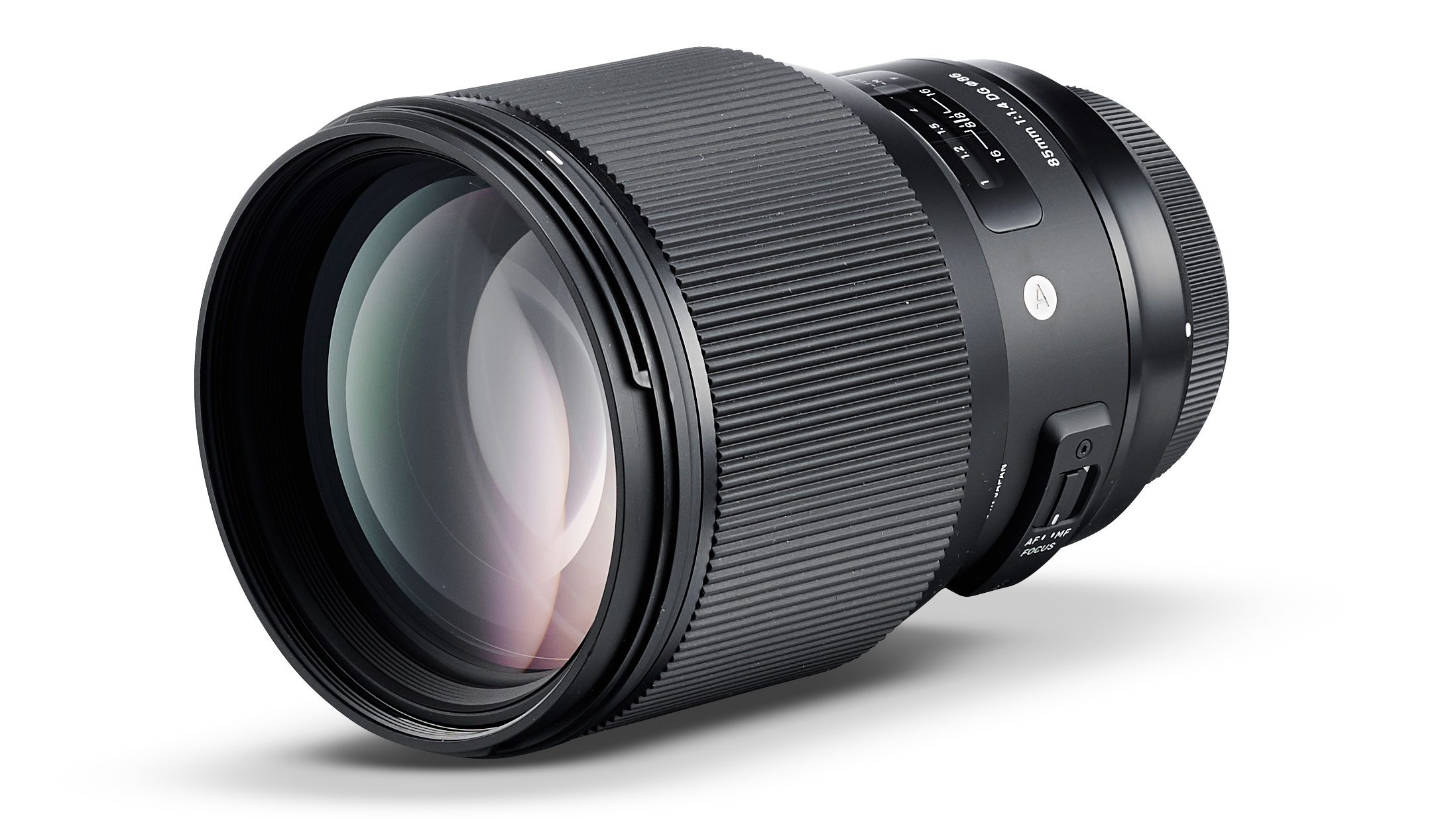The best Nikon portrait lenses in 2025 for Z-series mirrorless and F-mount DSLRs
Choose the best Nikon-fit lens for pictures of people, whatever your Nikon camera and budget

In this guide, I've assembled my picks of the best portrait lenses for Nikon cameras, no matter whether you shoot with a Nikon DSLR, Z-mount mirrorless, or have gone for a full-frame (FX) sensor or opted for a lighter model with an APS-C (DX) sensor.
The general consensus among photographers is that the best lens for portraiture is a short-ish telephoto prime with a large maximum aperture. This provides the best means of flattering your subjects and separating them from the background with a shallow depth of field.
Whether you're using a flagship professional camera like the Z8, a beginner's DSLR like the D3500, or a mid-range enthusiast option such as a Z fc, there is a fantastic portrait lens for you. So let's get to it!

Matthew Richards is a photographer and journalist who has spent years using and reviewing all manner of photo gear. He is Digital Camera World's principal lens reviewer – and has tested more primes and zooms than most people have had hot dinners! He is our go-to man whenever a new Nikon lens is released, and has personally tested the lenses on this list.
The Quick List

This is the best Nikon portrait lens for most Z-mount users, as it provides a superb balance of performance and price. Sharp as a tack, with dynamic bokeh.
Read more below

Unlike many third-party lenses, this offers complete electronic communication, just like a native Nikon Z lens, but with a significantly reduced price tag.
Read more below

For tighter head-and-shoulders portraits, a 135mm lens is a good choice, and this full-frame Z-mount lens is a doozy. It produces dazzling frames, even when used wide open.
Read more below

This may be a purely manual lens, with no autofocus or communication with the host camera, but image quality is excellent, handling is very good and it’s great value.
Read more below

Stellar sharpness and beautiful bokeh, combined with nonexistent fringing and chromatic aberration, go a long way to justifying the steep price tag.
Read more below

If you're using a DX-format mirrorless camera like the Nikon Z fc or Z50 II, this brilliant-value lens will deliver an equivalent focal length of 75mm – perfect for portraits!
Read more below
Load the next products ↴

For users of good old F-mount DSLRs like the Nikon D850, this sublime Sigma Art lens is a perfect buy for portraiture. It's a heavy boy, but the results are worth a little lifting.
Read more below

For a full-frame lens that won't break the bank, check out this Nikon-made 85mm f/1.8 lens. Weighing just 350g and sporting a weather-sealed mounting plate, it's good for outdoor work.
Read more below

While it's on the heavy side, this nifty-fifty from Sigma makes for an excellent portrait lens for DX-format Nikon DSLRs. The bokeh quality stays brilliant even when you stop down from f/1.4.
Read more below
Best Nikon portrait lenses
Why you can trust Digital Camera World
Best portrait lenses for Nikon mirrorless
Best FX mirrorless lens
Specifications
Reasons to buy
Reasons to avoid
The Nikon Z 85mm f/1.8 S is the optimal portrait lens for full-frame mirrorless Z-mount cameras, for most people, in terms of its balance of performance and price. It's super-sharp, thanks to a sophisticated internal construction, and produces images with dynamic, natural-looking bokeh and gorgeous detail, even at its minimum focus distance of 0.8m.
Other great features include full weather-sealing and an ergonomic control ring that is designed for tactile operation, while the Nano Crystal Coat helps to control flare and ghosting. However, its f/1.8 maximum aperture isn't as fast as some other lenses in this guide.
Read our full Nikon Z 85mm f/1.8 S review
Best budget option
Specifications
Reasons to buy
Reasons to avoid
Many third-party lenses for the Z system are 'dumb' lenses – meaning they have no electronics and no capacity to communicate with the camera. This means no autofocus or control of the aperture from the camera body. By contrast, the Yongnuo YN85mm f/1.8 DF DSM offers complete electronic communication, just as a native Nikon Z lens, but with a significantly reduced price tag.
It has fast and virtually silent autofocus, as well as a customizable control ring and an L-Fn (Lens function) button, both of which you can assign to your preferred functions. Of course, none of this would matter if the image quality were not up to scratch, but in our testing the Yongnuo YN85mm delivered excellent images, performing well even wide open at f/1.8. The bokeh quality is pleasing for portraiture – though perhaps not as good had it had a 9-bladed diaphragm rather than a 7-bladed one.
See our full Yongnuo YN85mm F1.8 DF DSM review
Best for headshots
Specifications
Reasons to buy
Reasons to avoid
The word ‘Plena’ is defined as ‘the condition or quality of being full’. There are a number of ways you can interpret this in the context of the Nikon Z 135mm f/1.8 S Plena, as it's a lens that is ‘full’ in many ways. It delivers superior sharpness and image quality right across the full extent of the frame, thanks to an optical construction that's packed full of high-quality glass. It also produces full, luscious bokeh in the defocused areas of images, which is perfect for portraiture.
At a focal length of 135mm, this lens specializes in tighter head-and-shoulders portraits, and it delivers spectacular frames again and again, even when used at its maximum aperture setting.
See our full Nikon Z 135mm f/1.8 S Plena review
Best manual focus
Specifications
Reasons to buy
Reasons to avoid
This Samyang lens is a purely manual affair. As well as being manual-focus, you can’t set the aperture from the camera body, so you have to use the control ring on the lens itself. By default, in-body image stabilization is disabled in full-frame Z-series cameras, but you can enable it by entering the lens information in the Setup menu’s ‘Non-CPU lens data’ section.
Focus peaking display in the electronic viewfinder and rear screen helps with accurate manual focusing, which can be critical considering that the depth of field tends to be very tight at f/1.4. Image quality is excellent, handling is very good and it’s great value at the price.
See our full Samyang MF 85mm f/1.4 Z review
Best pro lens
Specifications
Reasons to buy
Reasons to avoid
Sometimes, you've no choice but to award a lens five stars. The Nikon Z 85mm f/1.2 S may be prohibitively expensive for most users and it may be a chunky and heavy monster that feels like a back injury waiting to happen, but it's also an absolutely stunning portrait lens that scooped up a deserved slew of awards on its release in 2023.
Nikon may have been a little late to the 85mm f/1.2 party, but what an entrance it made – this lens dazzles, with stellar central sharpness and delectable creamy bokeh at the maximum aperture of f/1.2. Fringing, coma and lateral chromatic aberration are all effectively negated, while Nikon’s Nano Crystal Coat keeps flare and ghosting under control.
See our full Nikon Z 85mm f/1.2 S review
Best DX mirrorless lens
Specifications
Reasons to buy
Reasons to avoid
The Nikon Z 50mm f/1.4 remarkably costs less than the Nikon Z 50mm f/1.8 S, despite being 2/3 f-stop faster. Its standard 'nifty fifty' focal length on full-frame cameras translates to a 75mm effective focal length on DX-sensor Nikons, which is ideal for portraiture, especially in combination with the fast f/1.4 max aperture and 9-blade diaphragm producing pleasingly smooth bokeh.
Autofocus is quick for stills, and smooth and virtually silent for video. The lens delivers very good center-sharpness even when shooting wide open at f/1.4, with sharpness improving across the frame upon stopping down. It's compact and lightweight, weighing 420g, and features dual customizable control rings: the front ring is typically used for manual focus, while the rear ring is ideal for stepless aperture adjustment. It's moisture and dust-resistant, with a rubber mount gasket, and is brilliant value at the price.
See our full Nikon Z 50mm f/1.4 review
Best portrait lenses for Nikon DSLRs
Best FX DSLR lens
Specifications
Reasons to buy
Reasons to avoid
Sigma’s 85mm f/1.4 Art lens seemed to have been a long time coming. So, was it been worth the wait? It certainly feels the part; at 1,130g, it’s only 300g lighter than Nikon’s 70-200mm f/2.8E VR. It has an electromagnetically controlled diaphragm for greater accuracy in high-speed continuous mode and also features weather seals. The autofocus is extremely fast and accurate and image quality is excellent, with a wonderfully soft and creamy bokeh, although the lens isn’t as sharp as some of its rivals. Color fringing, coma, distortion, ghosting and flare are all negligible. All in all, the Sigma 85mm packs a heavyweight punch that’s in keeping with its construction.
See our full Sigma 85mm f/1.4 DG HSM | A review
Budget DSLR lens
Specifications
Reasons to buy
Reasons to avoid
This is the smallest and lightest lens in its (full frame) class, measuring just 80mm long and weighing a modest 350g. Build quality is very good too, down to the weather-sealed mounting plate and the inclusion of a single aspherical element. This lens is superbly sharp, even shooting wide open, although naturally the aperture doesn’t go as wide as an f/1.4 lens. Vignetting is noticeable, while bokeh is beautifully soft, stopping down gives specular highlights a heptagonal appearance – a consequence of the diaphragm having seven rather than nine blades.
See our full Nikon AF-S 85mm f/1.8G review
Best DX DSLR lens
Specifications
Reasons to buy
Reasons to avoid
This Art lens from Sigma’s Global Vision line-up is a heavyweight contender, one that’s almost twice the length and three times the weight of Nikon’s competing 50mm f/1.4 lens. It’s full-frame compatible, but undeniably hefty for a portrait lens on lightweight DX format bodies such as the Nikon D5600, tipping the scales at 815g. The relatively complex design incorporates 13 optical elements in all, including an aspherical element and three SLD (Special Low Dispersion) elements.
Construction feels reassuringly robust, but this lens does lack a weather seal on its mounting plate. An upside of the large front element is that vignetting is comparatively minimal here. Bokeh is deliciously creamy at f/1.4 and remains of exceptional quality even when stopping down a little. This is helped by a well-rounded aperture, based on nine diaphragm blades.
See our full Sigma 50mm f/1.4 DG HSM | Art review
How to choose the best Nikon portrait lens
The criteria for the best portrait lens are actually quite specific, which helps narrow down the choices. First, they need to have a focal length of 85mm or thereabouts – this gives you a good working distance from your subject and eliminates the kind of unflattering distortion that a wide-angle would give you. Longer lenses, running from 105mm to 135mm, can be useful if you're focusing more on tighter head-and-shoulders portraits.
Second, a fast maximum aperture is key. This allows you to blur the background and get a shallow depth of field that focuses all the viewer's attention on your subject. You're looking for a lens with a maximum aperture of f/1.8 or even f/1.4 – the latter will typically be more expensive and physically larger. However, slower lenses can still offer exceptional optical quality, so don't think that you'll be getting an inferior optic if you go for an f/1.8. Premium lenses will even go to f/1.2, but you'll need a sizeable budget to afford one of these.
There are two key practical questions to answer before you buy a lens – are you using mirrorless or DSLR, and is your sensor size full-frame or APS-C (which Nikon refers to as FX and DX respectively). The two systems use different lens mounts — Z-mount for mirrorless, F-mount for DSLRs. F-mount lenses can be adapted to work with Z-mount mirrorless cameras, but if possible you are best off using a native Z-mount lens as this will better be able to take advantage of the system's strengths, like its fast communication between camera and lens.
Nikon DX-format mirrorless cameras and DSLRs have a 1.5x 'crop' factor. It's rare to get 'portrait' lenses designed specifically for APS-C cameras, but the crop factor means a 50mm lens will actually have an effective focal length of 75mm in full-frame camera terms, and this is enough to make them very good portrait lenses that are more compact and more affordable than regular 85mm 'portrait' lenses for full-frame cameras.
How we test lenses
We test lenses using both real world sample images and lab tests. Our lab tests are carried out scientifically in controlled conditions using the Imatest testing suite, which consists of custom charts and analysis software that measures resolution in line widths/picture height, a measurement widely used in lens and camera testing. We find the combination of lab and real-word testing works best, as each reveals different qualities and characteristics.
The best camera deals, reviews, product advice, and unmissable photography news, direct to your inbox!
Matthew Richards is a photographer and journalist who has spent years using and reviewing all manner of photo gear. He is Digital Camera World's principal lens reviewer – and has tested more primes and zooms than most people have had hot dinners!
His expertise with equipment doesn’t end there, though. He is also an encyclopedia when it comes to all manner of cameras, camera holsters and bags, flashguns, tripods and heads, printers, papers and inks, and just about anything imaging-related.
In an earlier life he was a broadcast engineer at the BBC, as well as a former editor of PC Guide.
- Adam WaringGuides Editor









